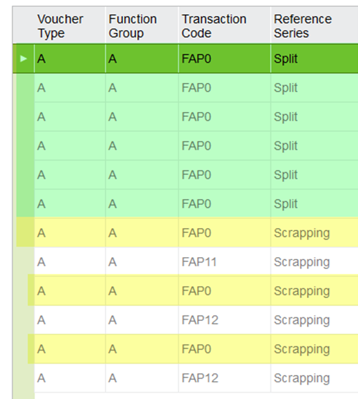Could some kindly provide an explanation to the below questions? Any available online documentation also is highly appreciated.
- Is there is a way to create two different transaction types to differentiate between "scrap" and "split"? Currently, they are both "FAP0" transaction types (on the balance sheet side of the transaction)
- How is a Process Code added to a transaction?
“ We seek a means to assign a different "Rollfwd" code part on the two different GL Vouchers. From reading IFS Online Documentation it was concluded that this could be done using Process Code in the GL Automatic Posting Rules.
• Two process codes are added to Basic Data: SCRAP and SPLIT;
• A GL Automatic Posting Rule which is configured with Process Code SPLIT and "Rollfwd" code OTH;
• There is a similar GL Automatic Posting Rule which is configured with Process Code SCRAP and a different "Rollfwd" code. “








